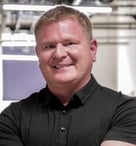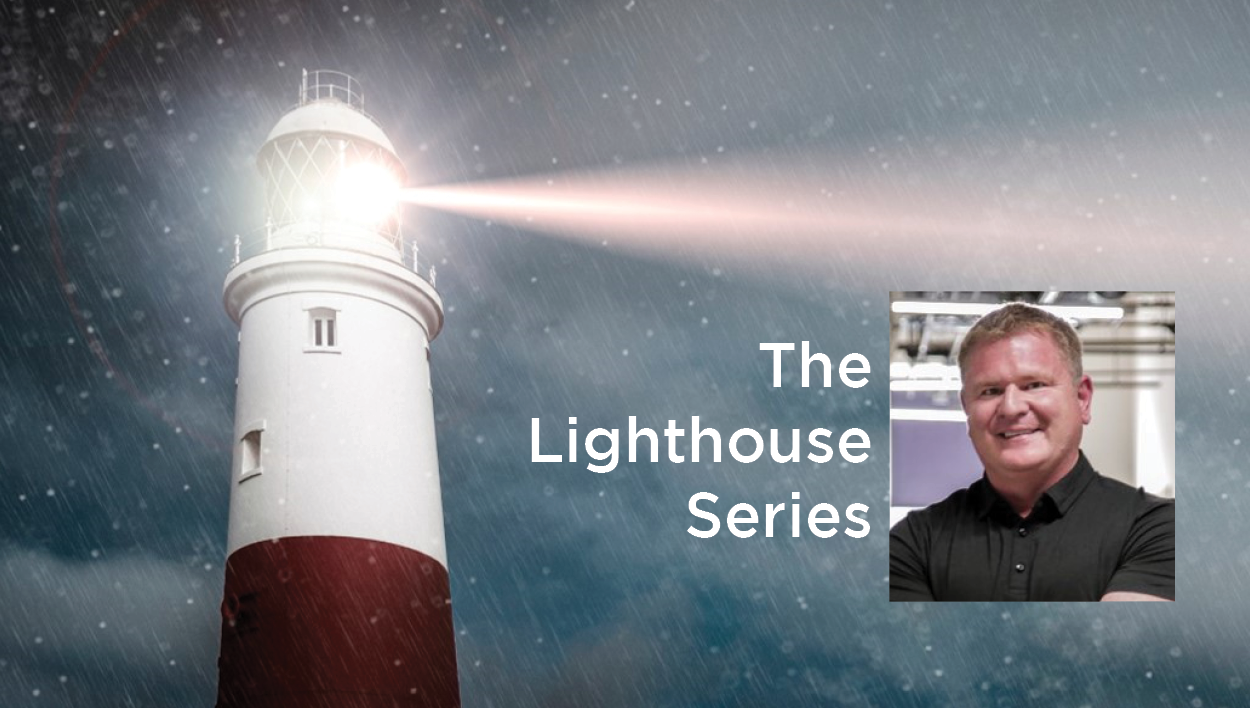The Lighthouse Series features a weekly Q&A where we ask five simple questions to one of our CEOs. These questions are matters of the heart, mind, and business. We hope that this is helpful to fellow CEOs as they muddle and model their way through the fog, winds, and frightful waves currently underway.
THIS WEEK'S CEO: TIM KOPP

Tim Kopp became the CEO of Terminus in December 2019 after serving on the Terminus board of directors for four years and assuming the role of executive chairman earlier that year. In addition to his current role at Terminus, Tim also remains a General Partner at Hyde Park Venture Partners. He is a recognized marketing and technology leader with more than 20 years of experience at global B2B and B2C brands such as ExactTarget and Coca Cola, and as an active early-stage investor at Hyde Park Venture Partners. During his time as chief marketing officer at ExactTarget, Kopp led a team of more than 300 marketing leaders to scale revenue from $50M to $400M, through IPO, and ultimately to a 2013 acquisition by Salesforce for $2.7 billion.
1. Now that we are eight weeks into the swan, what has been the biggest learning?
The big learnings (reminders really) are speed and transparency win. While these are always important, they are even more so now. Two reasons:
-
There is no time to waste with a bunch of spin.
-
While it might be tougher, I believe it builds the rawest credibility. For me, this meant a combination of sharing more on our financial position, real-time customer and pipeline conversations, and the decisions we were facing as an ELT daily.
My guiding principles have been to control what you can control, make thoughtful decisions quickly, rapidly share these actions with context (not every employee understands balance sheet dynamics, etc.).
There’s a quote from The Hard Thing About Hard Things by Ben Horowitz, “If you are going to eat shit, don’t nibble.” We knew we were going to have to make changes (what company hasn’t…), so we made those fast – days instead of weeks.
We viewed each day as a week (at times, it can feel that way anyway, doesn’t it?). Our mindset now is truly ‘never waste a good crisis.’ This is the time to deal with all the nagging decisions that have been weighing on you. The faster you get through the pain, you ensure survival. Our focus now is moving past surviving and towards thriving.
2. You have come in as a new CEO and also acquired a company recently. It must have been difficult to ensure alignment and integrate teams with WFH?
No question. I’ve done dozens of acquisitions, but obviously not in an environment like this. Similar to above, speed, trust and transparency win the day. We integrated Sigstr in less than a month actually. Because we already had multiple offices and leaders in several geographies, I think we were well prepared. Also, not having a ‘corporate office’ helped with neutralizing any politics or entrenched behaviors. In some ways, being remote has been a great equalizer. It’s never been more clear who the top producers are.
Tactically, here are a few things we’ve done to help with the WFH adjustment.
-
Slack has actually streamlined communication. We’ve created channels like #drive, which highlights employees that are doing work that highlights one or more of our core values and #wfhsuccess to give employees resources to be the most productive and find balance
-
We hold a weekly All-Hands where provide a State of the Union and a thorough update on market conditions and health of our customer base. This sets realistic expectations and anchors the team on reality, opportunities and threats.
-
We also hold tightly to our 2020 Vision and OKR’s. This serves as a constant reminder of our North Star.
-
Now, with Zoom fatigue setting in, we’re continually evaluating how we keep it fresh, smaller group meetings, walk and talks.
3. What are your top leadership priorities for 2Q’20?
I asked my ELT if each of us had to mortgage our homes to support the company personally, bet everything, what would have to be true? What is different about that than right now? Then, I told them, ‘let’s go do it.’ It’s been a hugely clarifying exercise.
While we’re sticking to long-term OKR’s, we’ve found it critical to move the goalposts in and continually generate short-term wins and momentum. It’s our priority to play the long game with our customers, which means being more flexible and using a ‘helping is the new selling’ mindset. Of course, to play by those rules, cash is king, so we’ve worked hard to stabilize our balance sheet to weather the storm.
I’ve also had to spend more time making the complex simple. It’s easy for teams to get paralyzed in battle; clear direction is more important than ever. Also, it’s important to quickly and honestly share where we’re winning and not. We’re shifting messaging, dialing in our ICP, firing up our competitive chops, and aligning even more tightly with top partners. We’re also spending more time on what I call ‘marketing from the inside out’— doing fewer things better and making sure we’re getting full juice for the squeeze on every new marketing deliverable or product release. This has meant doubling down on enablement and internal marketing.
4. How do you communicate with your board during these times? Is it any different than “normal times”?
I’m taking the same communication style approach with my board as I am with the whole team— transparency, speed, real-time adjustments and listening more than I speak. I think it’s critical to always be in communication with your board even with informal check-ins. Rather than creating lots of detailed reports, I’m simply sharing more real-time updates as they happen— updated forecasts from the head of sales, CS emails, on both customer issues and wins. Every day seems like a week right now, so communication is up 3-5x, as we’re all making real-time adjustments.
5. How do you sustain yourself on a daily basis?
For me, it’s all solving for personal energy management. This is hard. It’s a constant reminder that ‘Hard isn’t bad, it’s just hard.’ This means being highly conscious of what gives you energy and what drains you. Keep a literal inventory. It’s often not the hard things that drain my energy, but the smaller things that chip away at it. It’s just not the time to fight those battles. I set routines for quick journaling (gives me a sense of closure on each day), prayer, intense exercise to burn anxiety, moving more Zoom calls to walks. (Oh, and I tried, but don’t watch the news; instead, I’ve found myself enjoying a nice bourbon).
Finally, I’m constantly reminding myself – and our whole team – to allow more grace and space when needed. We’re all still processing this differently, and day-by-day. Simply acknowledging this with other leaders and telling them you trust and believe in them is needed more than ever before. This has gone a long way in building trust and team morale is close to an all-time high.

